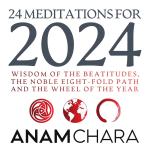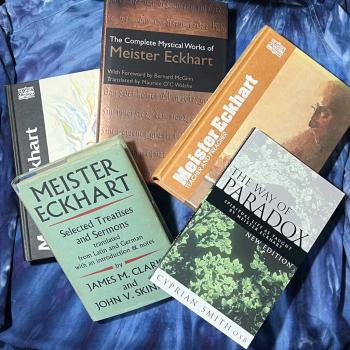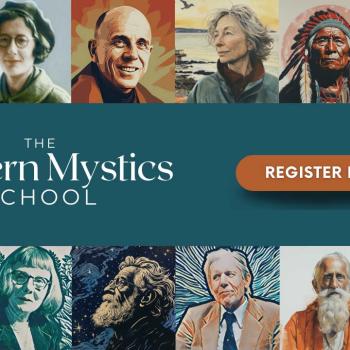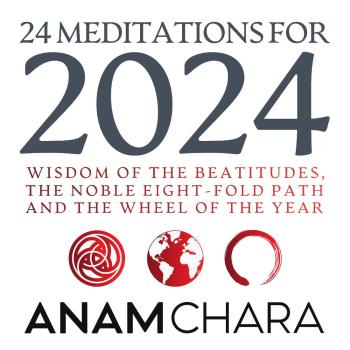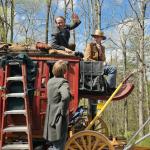Things are all in colours
And the size of others shall send you forwardArranged to sail you toward
A peace of mind
— “The Remembering (High the Memory)” (second movement of Tales from Topographic Oceans)
December 7 is, of course, Pearl Harbor Day. It is my brother’s birthday. And on this day in 1973, the ultimate prog band, Yes, released their controversial magnum opus, Tales from Topographic Oceans.
It has widely been panned not only as Yes’s worst album, but also as the epitome of everything that is wrong with prog rock. It has been described as self-indulgent, meandering, pompous, tedious. Jon Anderson’s lyrics, never known for their emotional clarity, seem particularly nonsensical. The album (and the tour that followed it) baffled Yes’s superstar keyboard player, Rick Wakeman, so much that he ended up taking a three year sabbatical from the band (there’s a story, legendary in Yes folklore, that one night he was so supremely bored while on stage, that he ordered Chinese carryout and sat there happily munching on his noodles between the bits where he was expected to perform). Village Voice critic Robert Christgau was particularly nasty in his savage take-down of the album, dismissing is as “flatulent quasisymphonies” — and in case you’re not sure what he meant by that, he summarizes it about as plainly as anyone can, declaring not only the album but the band itself as “full of shit.”
But who cares what critics think?
I sure didn’t; I loved Yes as a kid. Not many Yes songs made it onto AM radio, but the ones that did — “Roundabout” and “Your Move” — were, for my money, the best music on the air. I had just turned 13 when the album was released and didn’t really get into music until a few years later, but when I did, Yes was the band I fell completely in love with, the way other adolescents of my generation fell in love with Fleetwood Mac, Led Zeppelin or Pink Floyd (to be fair, I loved those bands too). My first concert was Yes in 1976, and I saw them two more times before I graduated High School — and would go on to see them a total of ten times between 1976 and 2004. I know that doesn’t exactly qualify me for superfan status, but high school friends still comment on Facebook that when they think of me, they think of Yes (and vice versa). This past summer I saw one such friend whom I hadn’t seen in over 30 years; when he showed off his man-cave to me, he put Yes’s Fragile on.
What the critics derided as pretentious to me sounded interesting and creative. Yes’s music is complex, with multiple key and tempo changes, intricate melodies, and long compositions that were more like tone poems or short symphonies than rock and roll love songs. It seemed that bands like Led Zeppelin or Emerson, Lake and Palmer featured one “star” musician in the line-up (Jimmy Page and Keith Emerson, respectively) known for their musical mastery; but in Yes, all four instrumentalists were true virtuosos (even though Wakeman got all the attention). Meanwhile, Jon Anderson’s crystalline voice was so high that he got accused of singing falsetto, but he was simply an alto tenor who in a different life might have been a star soloist in a boy choir. His lyrics, as I have mentioned, were more impressionistic than narrative in form; the critics blasted his writing for being “mystical” and they did not mean it as a compliment! But even though I fell in love with Yes a year before my own life-altering spiritual awakening, the visionary/otherworldly quality of Anderson’s lyrics rang a bell of recognition in my heart (an early indication of where the arc of my vocation would lead).
I don’t remember exactly when I bought Tales from Topographic Oceans, but I do remember the first time I saw the album, at a record shop in New Orleans when I was barely 15. Like many Yes albums, it features a colorful fantasy-landscape cover art by the visionary artist Roger Dean. A double album, there are only four “tracks” on the discs — it seems silly to call them songs, since the shortest one is over eighteen minutes long. They are movements like movements in a symphony; this is the ultimate concept album. Over the course of eighty minutes, the musical soundscape created by Yes includes classical guitar, trancey drumming, ethereal chanting, and even a finger-cymbal solo. When I did finally get my own copy, I was impressed by the beautiful packaging, evocative liner notes, and trippy-post-psychedelic music.
But the lyrics, dense and enigmatic as they are, really captured my imagination — as did these explanatory paragraphs in the album’s liner notes:
We were in Tokyo on tour and I had a few minutes to myself in the hotel room before the evening’s concert. Leafing through Paramahansa Yogananda’s ‘Autobiography of a Yogi’ I got caught up in the lengthy footnote on page 83. It described the four part shastric scriptures which cover all aspects of religion and social life as well as fields like medicine and music, art and architecture. For some time I had been searching for a theme for a large scale composition. So positive in character were the shastras that I could visualise there and then four interlocking pieces of music being structured around them. That was in February. Eight months later the concept was realised in this recording.
While still on tour, first in Australia and then the U.S., I had spelled out the idea to Steve. He liked it and the two of us at once began holding sessions by candlelight in our hotel rooms. By the time we reached Savannah, Georgia, things had come together very clearly. There, during one six-hour session, which carried on until 7 a.m., we worked out the vocal, lyrical and instrumental foundation for the four movements. It was a magical experience which left both of us exhilarated for days. Chris, Rick and Alan made very important contributions of their own as the work evolved during the five months it took to arrange, rehearse and record.
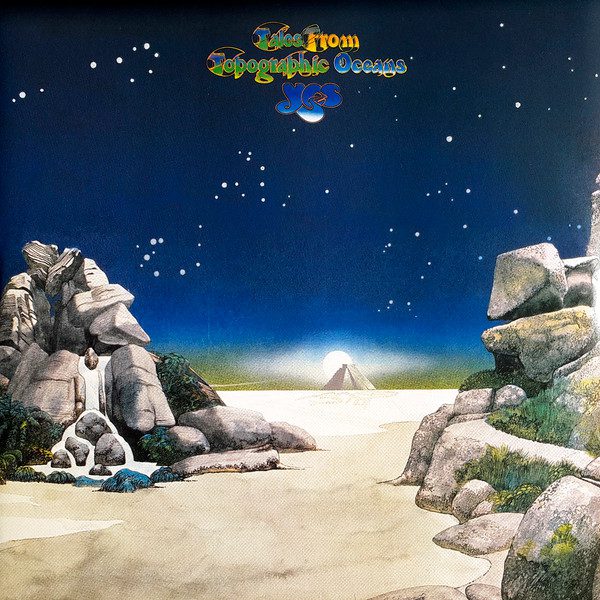
Thanks to Setlist.FM, we can see that Yes played in Tokyo March 8-10, 1973, and was in Savannah on April 20, 1973, so the basic vision for this musical project came together in less than two months (with another five months or so to complete the writing and get the recording done). But as a teenager, I was even more interested in tracing back the source of Anderson’s initial idea — which meant checking out Yogananda’s book for myself. Eventually I went to my local Waldenbooks (remember those?) and got a copy of Autobiography of a Yogi. Here’s the footnote Anderson referred to:
Pertaining to the shastras, literally, “sacred books,” comprising four classes of scripture: the shruti, smriti, purana, and tantra. These comprehensive treatises cover every aspect of religious and social life, and the fields of law, medicine, architecture, art, etc. The shrutis are the “directly heard” or “revealed” scriptures, the Vedas. The smritis or “remembered” lore were finally written down in a remote past as the world’s longest epic poems, the Mahabharata and the Ramayana. Puranas, eighteen in number, are literally “ancient” allegories; tantras literally means “rites” or “rituals”: these treatises convey profound truths under a veil of detailed symbolism.
The titles of the four tracks on Topographic Oceans reflects this:
- First Movement: Shrutis — “The Revealing Science of God: Dance of the Dawn”
- Second Movement: Suritis — “The Remembering: High the Memory”
- Third Movement: Puranas — “The Ancient: Giants Under the Sun”
- Fourth Movement: Tantas — “Ritual: Nous Sommes Du Soleil“
In the liner notes, Anderson also defines the titular concept of topographic oceans as “the ebb and flow and depth of our mind’s eye.” As a youth reading these words, they opened up an entire universe for me: the universe within. Growing up as a middle class, suburban white kid whose parents were faithful but nevertheless cultural Christians, my religious upbringing was much more moralistic than mystical. No one ever talked to me about the religious imagination, the interior life, the importance of contemplation, or the movements of the Spirit within. So it took a prog rock album to open the door for me to the wonders found in the depths of the human heart-mind matrix.
Eventually, when I read Autobiography of a Yogi, it was my first intimate glimpse into the writings of a mystic from outside of Christianity. I didn’t read it until I was in college, and I’m glad I waited; I read it after reading Evelyn Underhill’s Mysticism. Underhill’s book was my initiation into Christian mysticism, but Yogananda opened the door for me into the mysticisms of the world. Of course, he was a Hindu yogi, writing specifically out of his tradition — although, like Ram Dass whom I would read later on, Yogananda also often quoted or mentioned Christian mystics like Teresa of Ávila or John of the Cross. Eventually my interest in eastern spirituality veered more toward Zen than Advaita, but Yogananda’s accessible and deeply devotional writing helped me to see that intimacy with God knows no religious boundaries; and when he poetically described his first experience of samadhi (deep meditative consciousness), it reminded me very much of my own luminous encounter with the Ultimate Mystery. I intuitively grasped what I now know to be the “perennial philosophy” — that at the ground of our souls, our encounter with the Divine is One, and all the theological posturing and angry-God-blather of all the world’s fundamentalists and religious gatekeepers cannot erase that foundational unity.
Would I have discovered meditation, and mysticism, and interspirituality and the perennial philosophy without Tales from Topographic Oceans? Probably. But this divisive prog-rock album opened doors for a shy and socially awkward teenager and in doing so, propelled me on the great journey of the my life. For that I owe the album a debt of gratitude. Its role in my spiritual life reminds me, naturally, of Robert Frost’s “The Road Not Taken”:
Two roads diverged in a wood, and I—I took the one less traveled by,And that has made all the difference.




